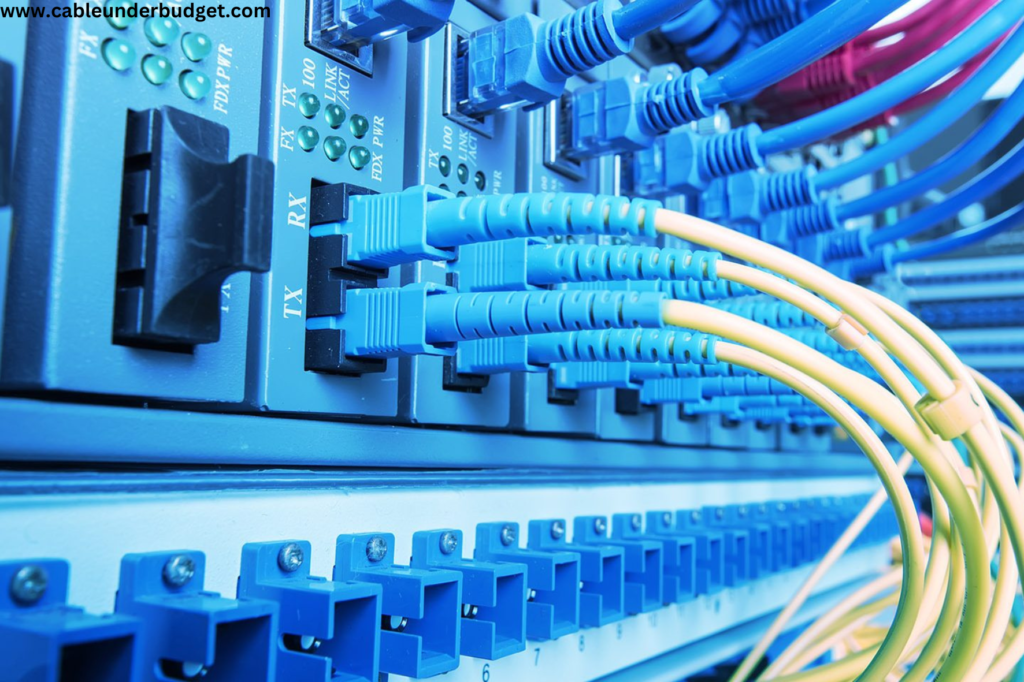Ethernet installation is a crucial aspect of setting up a network infrastructure for both residential and commercial spaces. It involves laying down the groundwork for a stable and high-speed internet connection, which is essential in today’s digitally connected world.

What is ethernet?
Ethernet is a system for connecting a number of computer systems to form a local area network (LAN), with protocols to control the passing of information and to avoid simultaneous transmission by two or more systems. The installation of Ethernet cables ensures seamless communication and data transfer between devices within a network.
Factors Affecting Ethernet Installation Cost
Type of Ethernet
The type of Ethernet chosen significantly impacts the overall installation cost. Options include Cat5e, Cat6, Cat6a, and Cat7, each with varying speeds and capabilities.
Distance Covered
The length of Ethernet cables required plays a crucial role in determining the installation cost. Longer distances often require more cable and additional equipment, increasing the overall expenses.
Existing Infrastructure
The condition of the existing infrastructure, such as wiring and networking components, can affect installation costs. Upgrading or repairing existing infrastructure may incur additional expenses.
Labor Costs
The cost of labor for installation varies depending on the complexity of the project and the expertise of the professionals hired. Skilled technicians may charge higher rates but ensure quality workmanship.
Additional Equipment
Additional equipment such as switches, routers, connectors, and termination tools may be required during installation, adding to the overall cost.
Additional Costs:
-
- Permits and Regulations: Depending on your location and the scope of the installation, you may need to obtain permits from local authorities. Permit fees can add to the overall cost of the project.
- Customization and Special Requirements: If your installation requires custom cables, connectors, or specialized equipment, you may incur additional costs for customization and procurement.
- Testing and Certification: After installation, it’s essential to test and certify the Ethernet cables to ensure compliance with industry standards and performance requirements. Testing equipment and certification services may incur additional costs.
- Safety Equipment and Gear: For installations in hazardous or high-risk environments, safety equipment such as harnesses, helmets, and gloves may be necessary, adding to the overall project cost.
- Future Expansion and Scalability: Consider future expansion and scalability requirements when planning your Ethernet installation. Investing in higher-capacity cables and infrastructure now can save costs in the long term by accommodating future growth without the need for extensive upgrades.

Additional Considerations:
-
- Environmental Factors: Consider environmental factors such as temperature, humidity, and exposure to elements when selecting Ethernet cables and installation methods. Outdoor installations or installations in harsh environments may require specialized materials and protective measures.
- Interference and Signal Degradation: Identify potential sources of interference, such as electrical equipment, fluorescent lighting, and radio frequency (RF) interference, and take measures to mitigate signal degradation and ensure reliable performance.
- Cable Management and Organization: Proper cable management and organization are essential for maintaining a clean and tidy installation, minimizing cable clutter, and facilitating future maintenance and troubleshooting.
- Vendor Selection and Reputation: Choose reputable vendors and service providers with a track record of quality workmanship, reliability, and customer satisfaction. Research customer reviews, testimonials, and references to assess the reputation and credibility of potential vendors.
Average Cost for ethernet installation
Residential Installation
For residential installations, the average cost ranges from $200 to $500, depending on the size of the property and the type of Ethernet selected.

Commercial Installation
Commercial installations typically cost between $1,000 and $5,000, depending on the scale of the project and the specific requirements of the business.
Industrial Installation
Industrial Ethernet installations for large-scale facilities can range from $10,000 to $50,000 or more, depending on the complexity and size of the operation.
DIY vs Professional Installation
Pros and Cons of DIY
DIY Ethernet installation may seem cost-effective initially, but it often lacks the expertise and precision of professional installation. Mistakes made during DIY projects can lead to costly repairs and inefficiencies.
Benefits of Professional Installation
Professional installation ensures proper planning, execution, and adherence to industry standards, resulting in a reliable and efficient network infrastructure. Professionals also provide warranties and guarantees for their workmanship.
Tips to Minimize ethernet Installation Cost
Comparing Quotes
Obtain quotes from multiple vendors and compare pricing, services, and warranties to ensure the best value for money.
Negotiation Strategies
Negotiate with vendors to lower costs or negotiate bundled services to reduce overall expenses.
Utilizing Discounts and Deals
Take advantage of discounts, promotions, and special deals offered by vendors to lower installation costs.
Opting for Bundled Services
Choose vendors that offer bundled services, such as installation, maintenance, and support, to reduce overall costs and streamline the process.
Conclusion
In conclusion, understanding the factors influencing Ethernet installation costs is essential for budgeting and planning purposes. By considering the type of Ethernet, distance covered, existing infrastructure, labor costs, and additional equipment, individuals and businesses can make informed decisions to minimize expenses while ensuring a reliable network infrastructure.
Frequently Asked Question (FAQs)


Pingback: How much Cat6 cable installation Cost in 2024 in USD?
Pingback: Cat6 Cable Installation at home: Step-By-Step Guide Tutorial
Pingback: How Much Cost of WIFI Installation at Home| A comprehensive Guide Tutorial 1